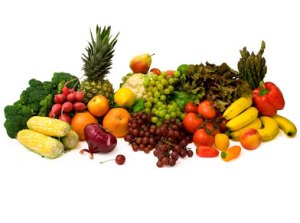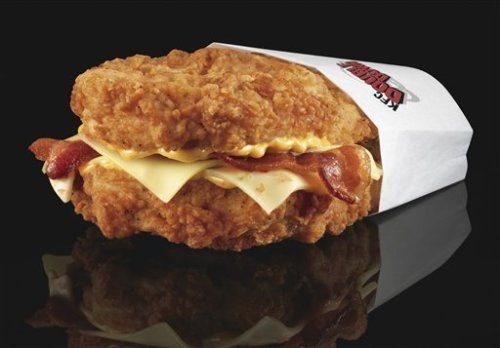 My fiancé gave up table salt for the New Year this year because she knows she uses a lot of it and it’s not the best thing for the body. But she didn’t know exactly why it’s bad or how bad it is, so she asked me. This is a typical mindset for many people: they have heard that salt is bad and maybe their doctors even told them to cut down on it, but they don’t know the reasons behind it. My belief is that if a person knows the reason behind something, he or she will be more likely to act in such a way to either avoid or embrace that something, depending on whether it has a positive or negative effect. It’s like telling a little kid he can’t have that third scoop of ice cream. If you tell him the reason is, “just because,” he’s less likely to listen than if you told him, “If you eat too much ice cream and then go run around in the yard, you’re going to get an upset stomach and get sick.” Although he’s still an ice cream-loving kid, he’s more likely to listen to the second reason because there’s a tangible cause-and-effect. Let’s go behind the scenes of the salt world.
My fiancé gave up table salt for the New Year this year because she knows she uses a lot of it and it’s not the best thing for the body. But she didn’t know exactly why it’s bad or how bad it is, so she asked me. This is a typical mindset for many people: they have heard that salt is bad and maybe their doctors even told them to cut down on it, but they don’t know the reasons behind it. My belief is that if a person knows the reason behind something, he or she will be more likely to act in such a way to either avoid or embrace that something, depending on whether it has a positive or negative effect. It’s like telling a little kid he can’t have that third scoop of ice cream. If you tell him the reason is, “just because,” he’s less likely to listen than if you told him, “If you eat too much ice cream and then go run around in the yard, you’re going to get an upset stomach and get sick.” Although he’s still an ice cream-loving kid, he’s more likely to listen to the second reason because there’s a tangible cause-and-effect. Let’s go behind the scenes of the salt world.
What Exactly are we Eating?
The stuff that we know and love is table salt. For too many, table salt is what we reach for when cooking or as soon as our food is served to us at a restaurant. We do this automatically and many times without even tasting the food to see if it needs salt. Are you guilty? I’m admittedly not the biggest culprit, but I know I can do better. Table salt is 99% sodium chloride (NaCl for the science geek in us). It is also known as refined salt because it is refined from raw salt that is obtained through salt mining or sea water evaporation. Raw salt obtained in this manner is purified to remove impurities through a process of recrystallization. Once it is refined, other chemicals are added to preserve dryness and to prevent caking, or sticking together. Iodine is also added as a measure to prevent iodine deficiency in people. Iodine deficiency affects about a third of the world’s people, and some studies have claimed that the deficiency is a cause of mental retardation, thyroid problems, and other ailments. So when you see a package of “Iodized Salt,” you now know what it means.
Sea salt has become popular with gourmet cooks who claim that it not only tastes better, but it is also healthier than table salt. Sea salt is produced by (surprise) evaporating sea water. Modern-day sea salt usually comes from the Mediterranean or other dry climates, where the evaporation can be done by the sun, instead of using expensive fuels. Sea salt has a thicker, more rock-like texture than table salt and can also taste differently due to its chemical composition. Since it’s unrefined, it still contains minerals such as potassium, calcium, and magnesium. These chemicals are electrolytes, which may be why sea salt is touted as a health benefit. Sea salt is also used in soap and other cosmetics and as bath soap, which some claim has a therapeutic effect.
Kosher salt has also become popular among chefs, and was recommended to me by my chef friend as a better alternative to table salt. It’s also an unrefined salt that typically contains no additives. It is recommended by chefs because it’s a purer salt that doesn’t contain iodine or other additives and because of its thicker, crunchier texture. It is not proven to be better for you than table salt, but some claim it is due to its lack of additives.

Salt Flats of Northern Territory, Australia
Health Concerns
Salt is good in a way because it’s one of the primary electrolytes in the body and is necessary for the body to function properly. Pay attention the next time you drink Gatorade and you can taste how salty it is.
However, over the past couple decades, there has been much contention over whether salt leads to high blood pressure. Many studies have shown that those who consume high amounts of dietary salt have high blood pressure. Conversely, these same studies have shown that a reduction in salt intake significantly reduces blood pressure levels. However, the studies simply haven’t been conclusive enough to prove a positive and direct correlation.
If salt is a natural element, why would it cause high blood pressure?
The presence of salt in one’s body causes the surrounding cells to release water due to a property called osmosis. The release of this water inside the bloodstream increases the pressure inside the blood vessels, which is what causes high blood pressure readings. This same phenomenon is why you feel or look bloated after eating too much salt. Salt causes your body to retain water, so the more salt you consume, the more water you retain, even though salt has zero calories. On the flip side, when you decrease your salt intake, you retain less water and, in effect, lose weight. Many diets that promise rapid weight loss stress the importance of eating low-sodium foods. These are quick-fix diets and may have short-term results, but likely are not good for you in the long run.
Processed and Canned Foods
Salt is a preservative, so it shouldn’t come as a surprise that it rules the processed and canned food aisles at the grocery store. The recommended daily allowance (RDA) for healthy adults is between 2,000 and 2,400 mg of sodium per day. Next time you go grocery shopping, pay attention to the nutrition labels of the foods you buy and you’ll be astonished. I know I was when I first started doing this. Among the worst offenders are canned soups, condiments, marinades, sauces, prepared or processed meats, cold cuts, butter, and cheese. For example, one serving of Campbell’s Classic Chicken Noodle Soup has 889 mg of sodium! Also keep in mind that there is almost always more than one serving in a can, so you may have to do some multiplication if you eat a whole can of soup for lunch. A great web resource for checking out nutrition labels is Nutrition Data.com where you can search for thousands of brands and products.
Restaurants and Take Out
When you dine at a restaurant, deli, or other establishment, DITCH THE SALT SHAKER! Any food that is served at a restaurant is already high in sodium. Why? It simply makes the food taste better. Plus, at restaurants where alcohol is served, it makes you thirstier and more inclined to keep ordering drinks. The food likely already has more than enough sodium to put you over your daily limit, so there’s no need to pile on more table salt.
Cooking at Home
I love to cook at home for several reasons. One of the main reasons is that I know what goes into my meals. I’m careful to buy ingredients that are low in sodium or have reduced sodium. Note: many more foods these days are advertised as being reduced-sodium. Although this is great, be mindful that there are probably salt substitutes in the food that may even be worse for you than the actual salt.
I don’t mind adding a little salt to my meals while I’m cooking if I’m using all natural, fresh ingredients. But if I’m using ingredients that already have sodium, I know I don’t need to break out the salt shaker.
Experiment with different herbs – either fresh or dried – and spices to flavor your food. Again, be careful because many spices such as Old Bay are basically just flavored salt.
Breaking the Habit
If the idea of cutting table salt out of your diet is too daunting, try doing it gradually. For example, don’t use table salt at dinner for two weeks. Then ban salt from dinner and lunch for two weeks. Then ban salt from your eggs or other breakfast foods as well. Pretty soon, you’ll be table salt free and you’ll never look back!
What do you do to limit your salt intake? What are your favorite low-sodium meals?
 A couple of weeks ago, I was fortunate enough to catch author Michael Pollan on his New Jersey stop of his current speaking tour. Most people haven’t heard of Pollan, but he’s an incredibly popular and successful author, professor, and food activist. In addition to writing for popular newspapers and magazines, giving inspiring TED talks, and lecturing at the University of California, Berkeley, Pollan has penned seven books to date. If I had to summarize his philosophy into one long, run-on sentence, it would be this: He describes the modern industrial food system that has become a cornerstone of human life, he explains how this system evolved and why it is unsustainable, and he aims to educate us all on a different way of living and a better way of eating.
A couple of weeks ago, I was fortunate enough to catch author Michael Pollan on his New Jersey stop of his current speaking tour. Most people haven’t heard of Pollan, but he’s an incredibly popular and successful author, professor, and food activist. In addition to writing for popular newspapers and magazines, giving inspiring TED talks, and lecturing at the University of California, Berkeley, Pollan has penned seven books to date. If I had to summarize his philosophy into one long, run-on sentence, it would be this: He describes the modern industrial food system that has become a cornerstone of human life, he explains how this system evolved and why it is unsustainable, and he aims to educate us all on a different way of living and a better way of eating.









